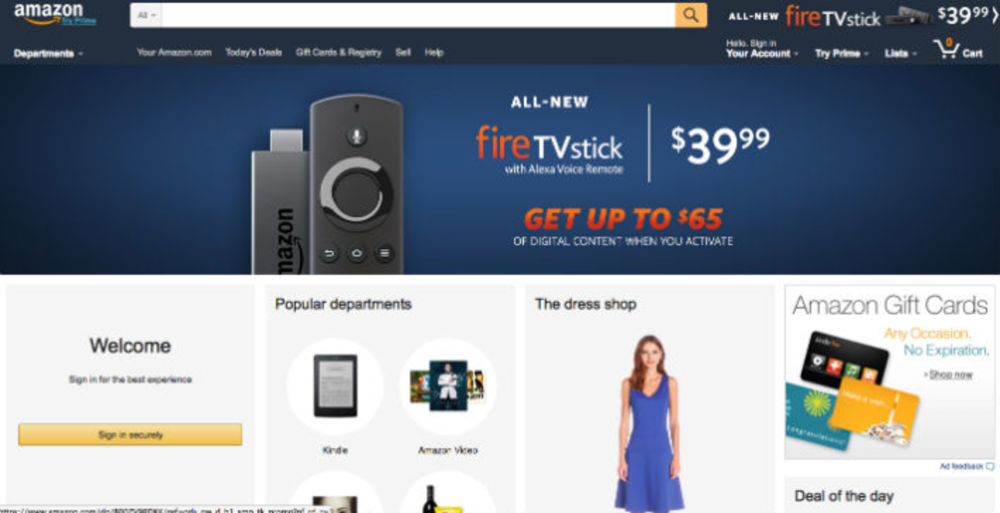Move over, Google. A new study from BloomReach and Survata shows that most consumers aren’t starting their path to purchase by consulting the search engine behemoth.
According to a survey of 2,000 U.S. consumers, 55% of respondents search Amazon first when shopping for products online—an 11% increase compared to last year. Twenty-eight percent turn to search engines to kick off their product search and 16% visit retailers’ websites—a 6% and 5% decrease, respectively, compared to 2015.
These behaviors apply to mobile shoppers, too. The study—titled “State of Amazon 2016”—found that 50% of consumers who start their product searches on mobile begin looking via the Amazon app or mobile site. Thirty-four percent initiate the hunt via mobile search engines, and 16% start their journey on a retailer’s mobile site or app.
Amazon can even be a source for product inspiration. While 59% of gift givers visit Amazon when they know what they want to buy (versus 24% who visit search engines or 16% who visit retailers), 49% also head to the online marketplace when they don’t know what to buy, compared to 28% who consult Google or Bing or 26% who look to retailers for guidance.
Once these shoppers reach Amazon, they’re then able to have a pleasant site experience. Consider: 53% of respondents say Amazon’s site experience is the best overall, and a third say it’s the main reason they shop via Amazon, versus other retailers. Fifty-eight percent even say they’ve abandoned a retailer’s website after having a poor site experience—only 30% say they’ve left Amazon for a retailer for the same reason.
Amazon’s search and product filtering capabilities seem to drive its site experience success—more than half of respondents consider them superior. In fact, 41% have left a retailer’s website for Amazon after having a poor search experience, and 50% say they’ve done the same after being unable to locate a product they know a retailer carries.
The online marketplace also enables consumers to do price-comparison shopping—something 90% of respondents say they do when visiting Amazon, even if they already found their desired product on a retailer’s website. Actually, 78% of this population do so often or always. Still, consumers are willing to snag a deal wherever they can find one, and 70% say they check retailers’ websites for their desired products, even if they already found them on Amazon. However, just 52% of this group does so often or always.
It’s this combination of favorable qualities that makes Amazon a prime destination for holiday shopping this year. According to the study, 94% of consumers intend to shop on Amazon this holiday season.
And while the study doesn’t highlight the number of people who convert on Amazon, the marketplace’s own figures prove that sales are being made. In July, Amazon announced that its Q2 sales reached $30.4 billion—a 31% year-over-year increase. It also raked in $857 million in net income that quarter.
Still, Amazon isn’t without its own flaws. BloomReach and Survata—a personalization platform provider and market research company, respectively—find that 20% of respondents are concerned about buying counterfeit products on Amazon, and only about one third consider Amazon’s site personalization and product recommendations superior. In fact, 41% of respondents say better personalization would make them more inclined to buy from a retailer versus Amazon. Surprisingly, 75% of the 2,000 U.S. respondents interviewed last year for BloomReach’s 2015 report, said that no other retailer can personalize better than Amazon.
Perhaps brands’ investment in personalization technology can explain this shift. According to the “26th Annual Retail Technology Study” by Gartner and RIS, 51% of the 102 retailers surveyed cite developing personalized marketing capabilities as the main strategy they’re focused on for the next 18 months. What’s more, 45% of respondents list CRM or personalization solutions as one of the top technologies to invest in in 2016.








